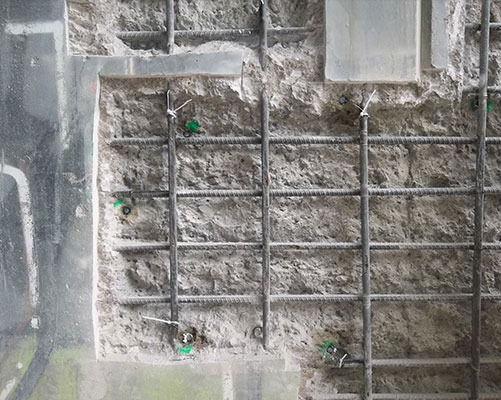Portbury Bridge, a single span reinforced concrete structure, was constructed in 1973 and carries the M5 over a railway line, just south of Bristol.
Location
Client
Completed
Structure

Due to chloride induced corrosion 76 concrete patch repairs, of various dimensions, were required to the north and south abutment walls. The latest Highways England Design Manual for Roads and Bridges (DMRB) provides guidance on assessing corrosion risk and developing a repair strategy in section CS462, ‘Repair and Management of Deteriorated Concrete Highway Structures’. Strategic options are to monitor only, remove all contaminated concrete, install an impressed current cathodic protection system, or to incorporate galvanic anodes within patch repairs. In this case there was a risk that carrying out patch repairs could induce further corrosion around the boundary of the repairs – the so called ‘incipient anode’ or ‘ring anode’ effect.

The most cost-effective option was deemed to be the installation of galvanic anodes to patch repairs. Highways England’s new standard specification for galvanic anodes, clause 5712 in Volume 1 of the Specification for Highway Works was included in the contract documentation. PatchGuard anodes, described as Type 1b in the specification, are designed to corrode sacrificially for up to 20 years, making the steel reinforcement relatively cathodic and preventing corrosion initiation within the zone of influence of the anodes – typically up to 500mm away from each anode.

PatchGuard anodes are compact and quick to install causing minimum disruption. The anodes are grouted into holes drilled from inside the repair boundary so that the anodes are located in the host concrete, not the repair material. This significantly enhances current output and maximises the level of protection to the steel around the patch. The system is self-powered minimising future maintenance requirements and associated life costs. The risk of secondary corrosion around the perimeter of the concrete patch repairs has been mitigated thus significantly extending the life of the repairs.



Patchguard™ Galvanic Anode, the unique corrosion repair solution for patch repairs.
Find out moreFor assistance and guidance from the industry experts please leave your details below and we’ll be in touch.